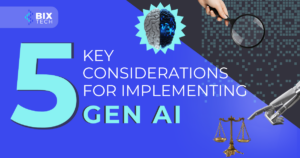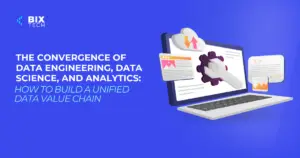Mastering AI for Business Leaders: Essential Strategies, Models, and Real-World Applications

Sales Development Representative and excited about connecting people
Artificial intelligence is rapidly reshaping how businesses operate, and there’s a growing expectation for teams to harness AI in their daily workflows. In fact, across industries, organizations are shifting toward an “AI-first” mindset—where leveraging AI is often the first step before seeking additional resources. If you’re a business leader without a technical background, this new reality can seem overwhelming. Yet, AI proficiency is quickly becoming a must-have business skill, not just a nice-to-have.
According to recent studies, up to 97% of executives are now responsible for delivering AI-powered results, while over 80% of AI projects still fail—often due to issues with data quality or underestimated project complexity. The good news? You don’t need to become an engineer to lead in this new era. What you do need is a clear understanding of what AI is, how it works, and how it can drive value for your organization. This foundational knowledge empowers you to make better decisions, ask sharper questions, and confidently guide your teams in an AI-driven world.
This guide is your fast track to understanding essential AI concepts, from the major branches and learning strategies to different model types and practical applications. By the end, you’ll be equipped to navigate AI opportunities and challenges—turning technical buzzwords into actionable business insights.
Demystifying the AI Stack: From Subfields to Solutions
AI can often feel like a confusing web of jargon—terms like “machine learning,” “deep learning,” and “generative AI” are tossed around interchangeably, even though they mean different things. To make informed decisions, it’s vital to understand how these fit into the broader AI ecosystem.
Understanding AI Subfields
Think of AI subfields as specialized departments in your organization, each focusing on a unique aspect of intelligence:
- Machine Learning (ML): The “Operations” team of AI, constantly looking for ways to improve performance and efficiency based on data.
- Natural Language Processing (NLP): Functions much like your Communications team, interpreting and generating human language.
- Computer Vision: Acts as Quality Control, analyzing visual information and identifying patterns.
These departments often collaborate, overlap, and share resources, just like teams in a business.
Techniques: The Methods Behind the Magic
Within each subfield, AI uses specific techniques—methodologies for learning from data or solving problems. If AI is the field and models are the tools, techniques are the processes used to build and train those tools. Understanding these methods helps you evaluate the effort, skills, and data required for a successful AI project.
Models: The Trained Brains of AI
Models are the result of applying techniques to data. They are trained systems that recognize patterns and make predictions or decisions. For business leaders, knowing what a model is—and what it can achieve—enables you to set realistic expectations, whether you’re looking for marketing insights, smarter product recommendations, or automated supply chain decisions.
Applications: Bringing AI to Life
Applications are where AI delivers real value. These are the products, tools, or features that leverage trained models to solve practical business problems. Examples include chatbots, recommendation engines, fraud detection systems, and generative tools that summarize reports or create content. Understanding how these applications work helps you assess their reliability, scalability, and relevance to your business challenges.
By clarifying these layers of the AI stack, you can make smarter investments, hire the right talent, and ensure your infrastructure supports your strategic goals. Explore how AI-driven innovations are transforming software development for real-world impact.
How AI Learns: Key Learning Strategies Explained
The way an AI system learns determines its capabilities and limitations. Gaining a basic understanding of these learning strategies is crucial for business leaders—especially when evaluating new tools, setting expectations, or scoping projects.
If you’re considering an AI solution to forecast sales, optimize staffing, or enhance customer experience, knowing which learning approach is used helps you ask the right questions, such as:
- Does the model require labeled data?
- How much data is needed for training?
- Can the model keep learning after deployment?
Let’s break down the main learning strategies you’ll encounter:
Supervised Learning
This is the most common approach. The model is trained on a labeled dataset—meaning the input data includes the correct answers. For example, to predict customer churn, you would train the model on past records labeled as “churned” or “retained.” The system learns patterns and applies them to new data for accurate predictions.
Unsupervised Learning
Here, the model works with unlabeled data. It explores the data on its own, discovering patterns or clusters without guidance. Imagine handing your team a list of customers with no labels and asking them to group similar profiles based on purchase history—this is what unsupervised learning does best.
Reinforcement Learning
This method teaches models through trial and error—making decisions, receiving feedback, and learning which actions lead to better outcomes. It’s similar to coaching an employee: they try, fail, receive feedback, and improve. Reinforcement learning is often used in areas like route optimization or dynamic pricing.
Semi-Supervised Learning
When labeling data is too costly or time-consuming, semi-supervised learning combines a small amount of labeled data with a larger pool of unlabeled data. The model learns efficiently, improving accuracy without the need for vast labeled datasets.
Self-Supervised Learning
This advanced method requires no manual labeling. Instead, the model generates its own training signals from the data itself. It predicts missing information and learns context—perfect for training large language or vision models, such as those used in natural language processing and business applications.
Beyond Machine Learning: Rule-Based and Hybrid Approaches
AI learning isn’t limited to machine learning. Here are two additional strategies:
- Rule-Based Systems (Symbolic AI): Uses explicit, human-written “if-then” logic. These systems are ideal for processes that require consistent and explainable decisions, such as automated compliance checks.
- Neuro-Symbolic AI (Hybrid AI): Combines rule-based logic with machine learning’s adaptability. This approach delivers both interpretability and flexibility, making it valuable in sectors like finance, legal, and healthcare.
Real-World AI in Action: Business Use Cases
Understanding the theory is important, but seeing how AI works in practice is even more valuable. Here are just a few examples of how organizations are leveraging AI for competitive advantage:
- Customer Service Automation: AI-powered chatbots handle routine inquiries, freeing up human agents for more complex issues.
- Predictive Analytics: Machine learning models forecast demand, enabling smarter inventory and staffing decisions. Curious about the business impact? See how predictive analytics is shaping tomorrow’s strategies.
- Fraud Detection: AI monitors transactions in real time, identifying suspicious behavior faster than traditional systems.
- Personalization: Recommendation engines tailor product suggestions, increasing engagement and driving sales.
- Document Analysis: NLP models extract insights from contracts, reports, or customer feedback—streamlining workflows and reducing manual effort.
Building AI Literacy on Your Team
In today’s business landscape, AI is not just a technology issue—it’s a strategic one. As a leader, you don’t need to master every technical detail, but you do need to understand the key concepts, capabilities, and risks. This foundation allows you to:
- Set realistic expectations for AI projects
- Ask informed questions and challenge assumptions
- Align AI initiatives with business goals
- Foster a culture where experimentation and learning are encouraged
By moving beyond the buzzwords and focusing on clear, practical knowledge, you’ll be able to steer your organization toward meaningful, scalable AI adoption.
Conclusion
AI is no longer confined to tech giants—it’s a core driver of innovation and business value across every industry. By learning the fundamentals of AI subfields, learning strategies, models, and applications, you equip yourself and your team to lead with confidence.
Ready to take the next step? Explore more about AI learning strategies and business transformation to keep your organization ahead of the curve.









